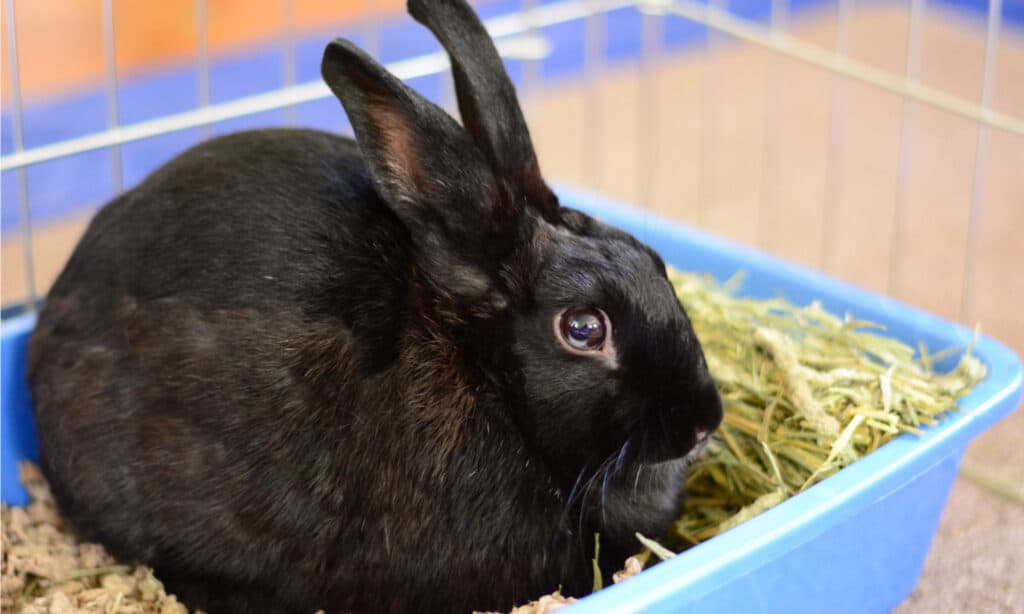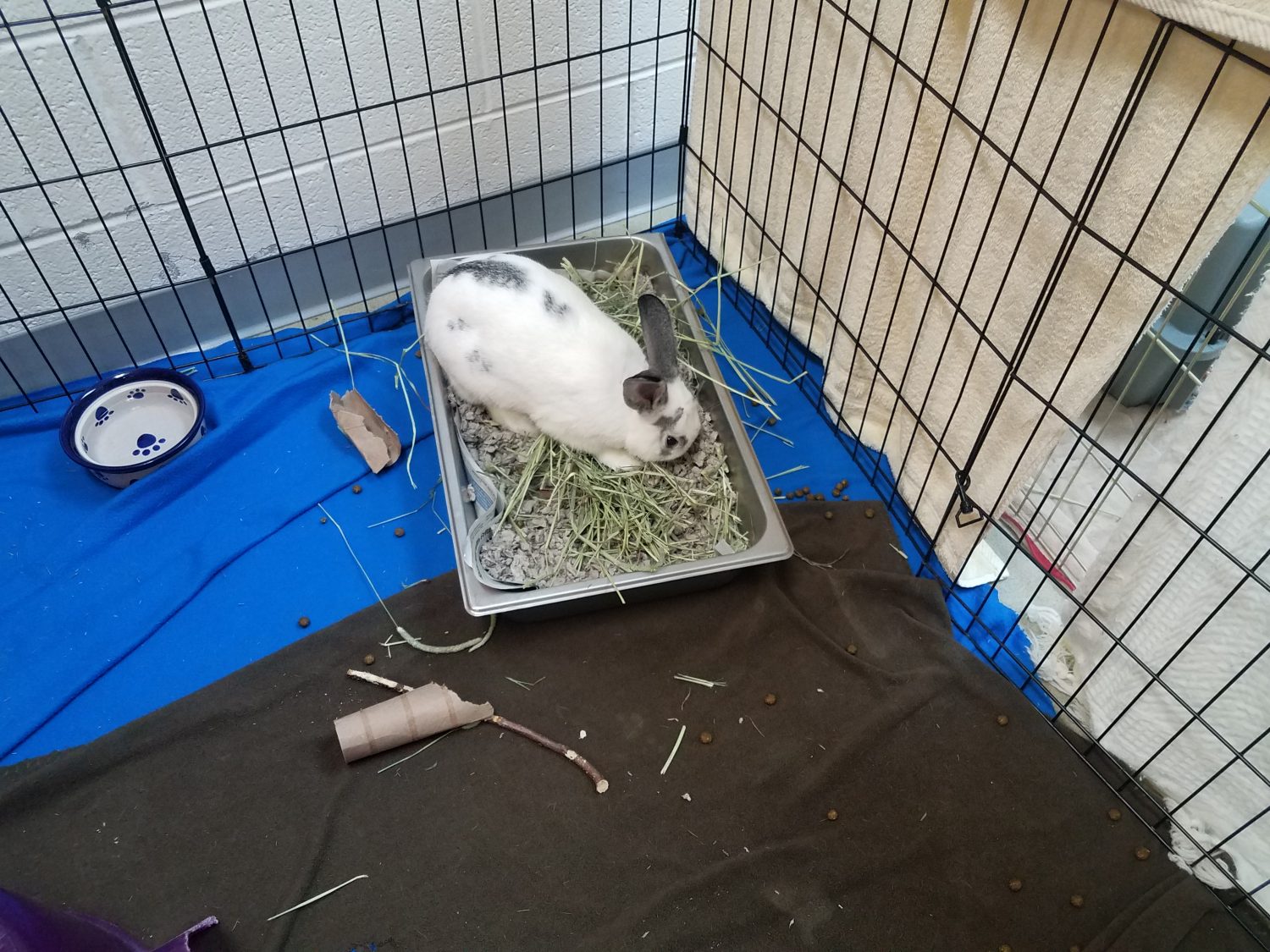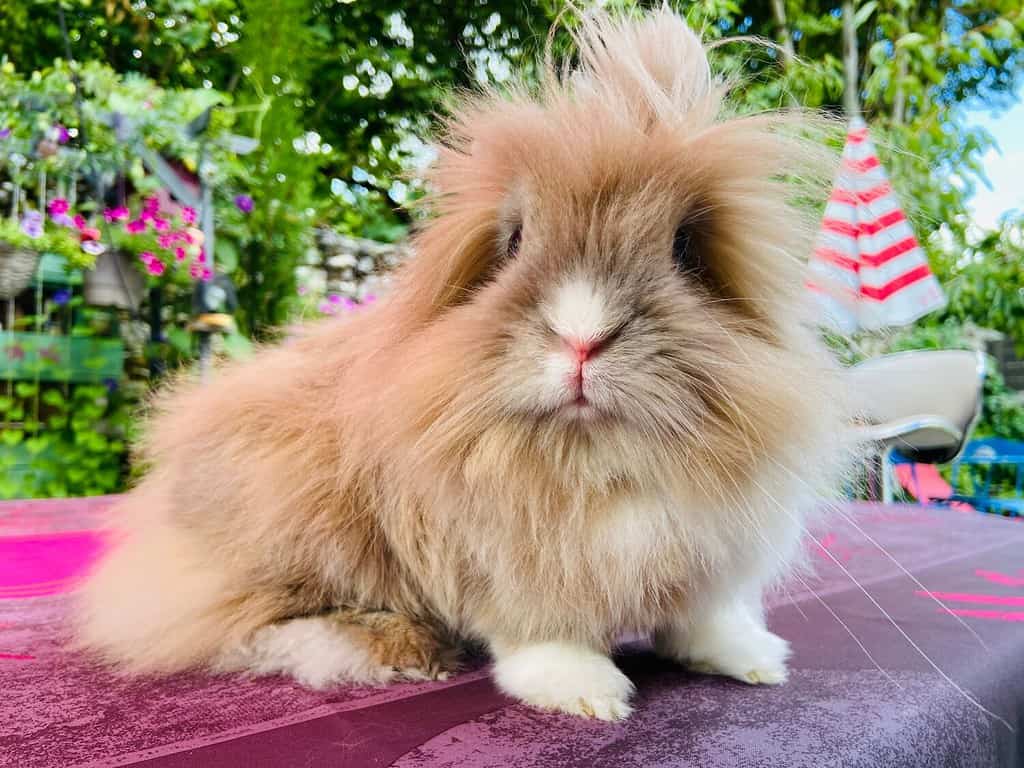How to Litter Train Your Rabbit: Timeline and 7 Steps to Take for Success
Did you know that you can litter train your rabbits? In just seven steps, they can free roam without peeing or pooping everywhere!
Begin by spaying or neutering your rabbit. Then, set up a litter box with rabbit-safe litter such as paper bedding. Add a hay pile inside and place the box in a corner. Fill it with their scent by moving any accidents into the box.
In this guide, we’ll discuss how to litter train your rabbit, what timeline you can expect, and some troubleshooting tips.
How Long Does it Take to Litter Train a Rabbit?

©mkzdillon/Shutterstock.com
Many bunnies learn to use their litter box in less than a week. This is because, when set up well, a litter box plays into their instincts. They potty while they eat and like to go in corners.
Some rabbits will take much longer to learn, however. It’s important to spay or neuter your rabbit before expecting reliable litter box use, and to remember that they’re unlikely to ever use the box 100% of the time.
7 Steps to Litter Train Your Rabbit

©stockphotofan1/Shutterstock.com
#1: Spay or Neuter Your Rabbit
Intact rabbits have an instinct to mark their territories and do so much more often than spayed and neutered rabbits. Spaying or neutering your rabbit also comes with a host of health benefits.
Before litter training, your rabbit must be spayed or neutered. Give them time to recover as well before you start expecting good litter box habits.
#2: Set Up Your Litter Box
There are a few things to think about when setting up your rabbits’ litter box:
- Selecting the right litter box. Though lidded boxes are popular, they often don’t have enough ventilation and will trap odors and any dust created by your hay or litter. This may cause respiratory issues. A large, open box is better for rabbits. Make sure they can stand completely inside the box while eating their hay.
- Choosing a bunny-safe litter. Most cat litter isn’t safe for rabbits. They need a litter that is dust-free, comfortable on their feet, and safe if consumed. Paper bedding is a good choice.
- Ensuring the litter is deep enough to absorb urine and trap odors. It should be around 2-3 inches deep.
- Adding hay. Hay piles inside of the litterbox are the easiest for your rabbits to eat and provide enrichment as they can also dig and play in it. However, hay piles can be messy. Hay holders with large holes work well, but avoid those with small holes that prevent your rabbits from accessing their hay or that they can get their heads stuck inside.
#3: Start in a Small Area
Ideally, your rabbits will eventually free-roam at least one room. While litter training, though, it’s best to start with a smaller place such as a large dog exercise pen. Please keep in mind that rabbits never belong in pet store cages or hutches!
Keeping them in a smaller area makes clean-up easier and ensures they aren’t peeing in hard-to-clean spaces, like under the bed or on the sofa. It also means the litter box is always nearby and convenient for them to use.
#4: Place the Litter Box in a Corner
Rabbits naturally potty in corners, so placing their litter box in a corner of their pen will encourage them to go there. You might also choose to place boxes in multiple corners.
If your rabbits end up peeing or pooping in a different corner, it’s often easier to move the litter box than it is to fight them on where they want to go. Take it as a good sign that they’re at least pottying in the same place consistently!
#5: Place Potty Accidents Into the Box
It may seem gross, but pick up stray poops from your rabbits’ environment and place them into the litter box. This fills it with their scent and tells them where you want them to go next time.
You can also do this with urine by soaking it up with paper towels and putting them in the litter box.
#6: Try to Catch them Before Accidents Happen
If you see your rabbit about to go potty, this is a good time to usher them into the litter box. You may not want to do so if they’re already going as it can make things much messier than just letting them go where they’re at.
Interrupting them before they potty and herding them into the box teaches them where you want them to go. You can also offer treats for pottying in the litter box to reinforce the behavior.
Don’t block your bunny in the litter box or act too forceful, as this can make them avoid it in the future out of fear.
#6: Clean the Litterbox Frequently
The frequency you need to clean your litter box will depend on the size of the box, litter type and depth, how many boxes you have, and how frequently it’s used.
You should deep clean the litter box at least once a week and may need to clean it as often as daily. Take a look whenever you top up your rabbit’s hay to see if the litter looks soiled or if the box smells, as these are signs it needs to be cleaned.
If you don’t clean the litter box often enough, your rabbits may stop using it. They’re clean animals who don’t tend to like using a dirty “toilet!”
#7: As Your Rabbits Learn, Slowly Expand their Space
As your rabbits begin using the litter box consistently, slowly expand their space until they’re free-roaming as much of the house as you desire. Be sure to put more litter boxes down in the free roam space as they get used to it, and watch your buns carefully to stop them from having accidents.
Gently guide them to a litter box if they look like they’re about to pee, such as if they begin raising their tail.
Feel free to go back to a smaller area if you’re unhappy with the amount your bunnies are using their litter box, but do keep trying to train them to be reliable even with more space.
Lastly, remember that many rabbits are never perfect and that accidents happen!
Why Can’t I Litter Train my Rabbit?

©KanphotoSS/Shutterstock.com
There are a few reasons you may be struggling to litter train your rabbit! They include:
Preparation Issues
- Your rabbit isn’t spayed or neutered. This makes them much more likely to mark their territory, which means pooping and peeing outside of the box.
- The litter box isn’t in a secluded, quiet location. You don’t want it next to the dryer, for instance, as your rabbit may fear the sounds when your clothes are drying. You also don’t want children or other pets disturbing your rabbits while they go potty.
- They have too much space. When litter training, you want to start with a small area such as a large dog exercise pen. Expand their space little by little as they continue going in the litter box reliably.
- Your rabbit doesn’t like their litter box – it might not be large enough, the litter type may be uncomfortable on their feet, or it could be difficult to hop into.
Training and Health Issues
- They associate the litter box or going potty with bad memories. This may be that you’ve punished them for accidents (which should never happen!), that they had an injury or illness they associated with the litter box such as a urinary tract infection, or that they were scared while using it.
- They need more litter boxes. Having many boxes will make potty training your buns easier, especially if you have two or more rabbits.
- You haven’t cleaned well enough. Soiled areas must be cleaned thoroughly so that your bun can’t smell where they peed, or they’ll keep returning to the area. Litter boxes must also be cleaned frequently.
- Your rabbit may have health issues. If your rabbit cannot seem to use the litter box reliably no matter what you do, ask your vet about it at their yearly check-up. If your rabbit used to use the litter box well and isn’t anymore, schedule a vet appointment soon to ensure illness or pain isn’t causing the change.
Please remember to never punish your rabbit for accidents outside of the litter box, and that they never pee or poop out of spite.
The photo featured at the top of this post is © mkzdillon/Shutterstock.com









